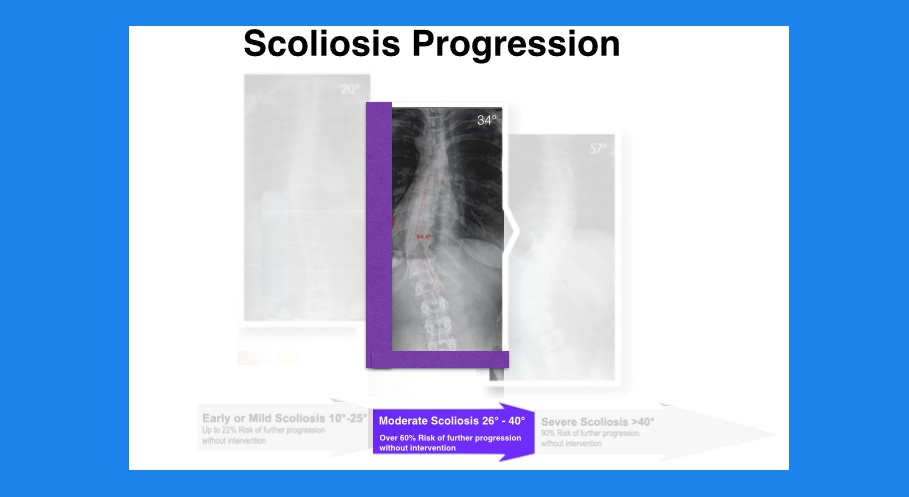Once the abnormal curvatures of the spine have reached the level of a Moderate Scoliosis the risk of progression, without intervention, increase to 68%!*
Due to the increased imbalances in the spine the patient may begin to experience back pain, neck pain, headaches, loss of balance or feeling clumsy. A rib hump may be present and unleveling of the shoulders is likely to be apparent causing cloths to hang unevenly.
The rib cage is starting to compress in on the lungs and other organs, decreasing vital lung capacity causing to be easily winded with exercise. Also, a poor body image may cause stress and anxiety in the patient.
Comparison of Treatment Approaches
- Conventional Approach:
- Rigid Plastic Bracing – worn like a cast for 23 hrs/ day
- Surgical Intervention if the brace fails
- Alternative Approach:
- Dynamic Bracing (Soft Elastic) allows free of movement
- Three-Dimensional Corrective Exercises (Schroth Method)
- Adjustments of misalignments of the spine
- Myofascial Therapy
Does your doctor see your child a rigid statue or a dynamic human being?
Although Rigid Bracing may be effective in halting the progression of the curves while it is being worn, studies have shown that Rigid Bracing can actually CAUSE increased muscle atrophy on the side of the curve that is already weak. This results in worsening of the curves after removal of the brace and usually a recommendation for surgical fusion at that point.
Alternatively, a dynamic brace combined with a program of adjustments, rehabilitative exercises, and myofascial work allows for lengthening and strengthening of the underused muscles of the spine that have weakened and resting and relaxing of the muscles that are overstretched and overused.
Benefits of Alternative Care for Moderate Scoliosis
- Avoid problems associated with rigid bracing and is more comfortable as it allows movement
- Avoid progression of curves to the point that surgery is recommended
- Relieve pain
- Increase vital lung capacity and relieve organ pressure
- More energy
* Curve Progression in Ideopathic Scoliosis, The Journal of Bone and Joint Surgery, SL Weinstein and IV Ponseti, J Bone Joint Surg. Am. 1983:65;447-455

